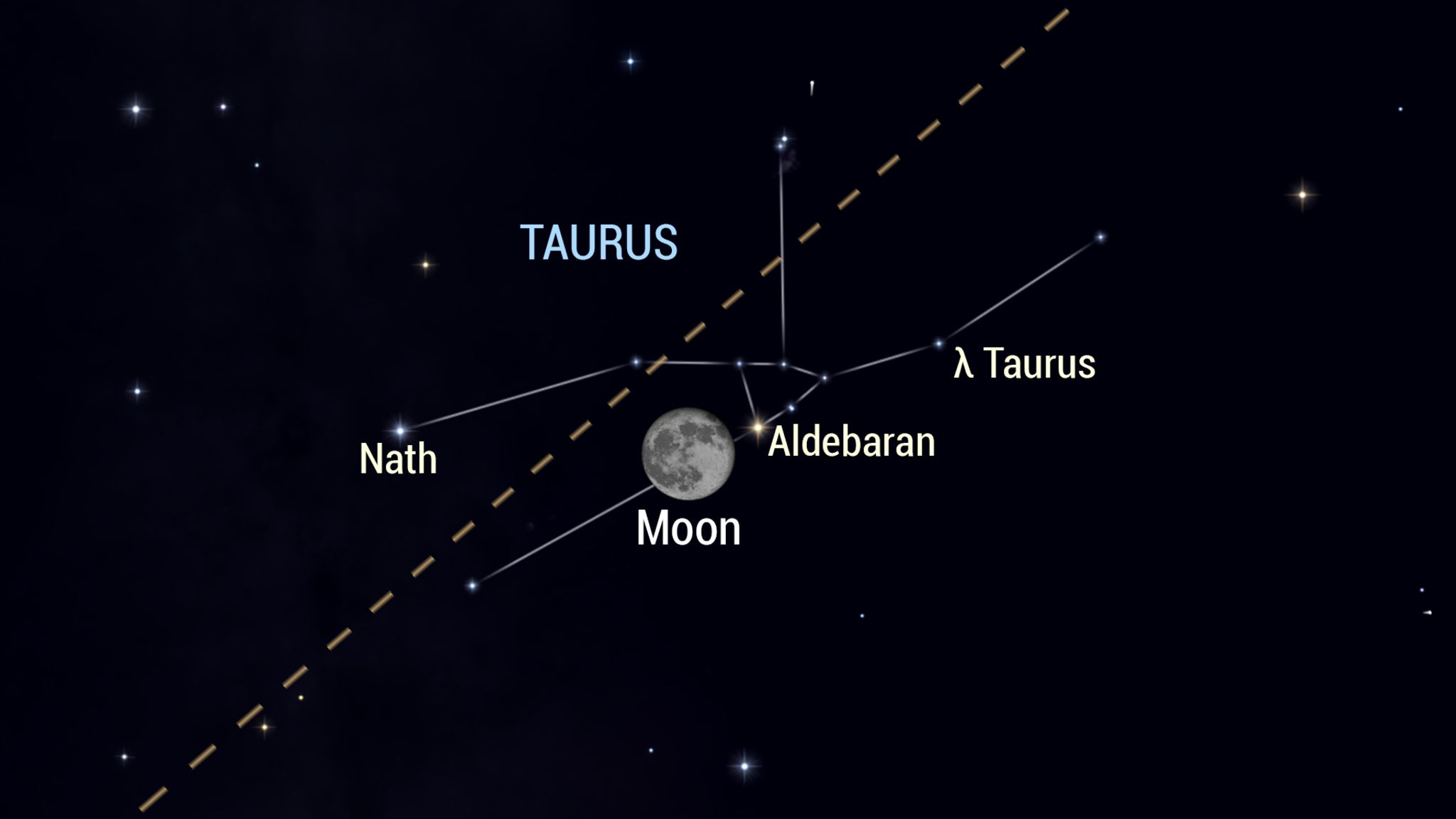The Moon and Planets this Week
This week, the moon will continue its trip across the evening sky as it waxes towards Friday’s Full Frost Moon. Low-angled sunlight will illuminate peaks and crater rims while casting deep black shadows from them. It will also reveal subtle topographic features that are otherwise invisible, such as ridges and cracks on crater floors. New sections of the moon will be highlighted every night as the terminator, the boundary line that separates the lit and dark hemispheres, migrates from lunar east to west.
At the beginning the week, the moon will pass through the dim water constellations of Pisces (the Fishes) and Cetus (the Sea-Monster) until Wednesday. Then it will cross Aries (the Ram), Taurus (the Bull), and the raised club of Orion (the Hunter) – ending up next Sunday evening in the sky between the legs of Gemini (the Twins).
Friday’s November full moon always shines in or near the stars of Taurus (the Bull) and Aries (the Ram). Since the moon sits opposite the sun on this day of the lunar month, it will rise at sunset and set at sunrise. Full moons during the winter months in North America climb as high in the sky as the summer noonday sun, and cast similar shadows.
This week, Mercury will be positioned very low in the southwestern sky, visible with difficulty for a very short time after sunset. Both Mercury and Jupiter will soon cross to the western side of the sun and join Venus in the eastern pre-dawn sky.
Even though it is continually dimming as Earth pulls farther away from it, reddish Mars will be the brightest celestial object the southern evening sky this week, besides the moon. Look for Mars as a bright, reddish, star-like object shining in the lower half of the southern sky after dusk.
Dimmer, yellowish Saturn will be located six fist diameters to the lower right of Mars this week. But it will set soon after 7 pm local time, so don’t leave it too late to look for it. After the sky has darkened, even a small telescope should be able to show you some of Saturn’s larger moons beyond the planet’s rings, especially the largest satellite, Titan.
Very bright Venus, will be shining in the morning pre-dawn eastern sky all winter long. This week, Venus will be located only about two finger widths to the lower left of the bright white star Spica in Virgo (the Maiden) and drawing farther away from that star every morning. In a telescope, Venus will exhibit a slender crescent. Despite the tiny fraction of its surface reflecting sunlight towards us, Venus remains so bright because of its relative nearness to Earth.




